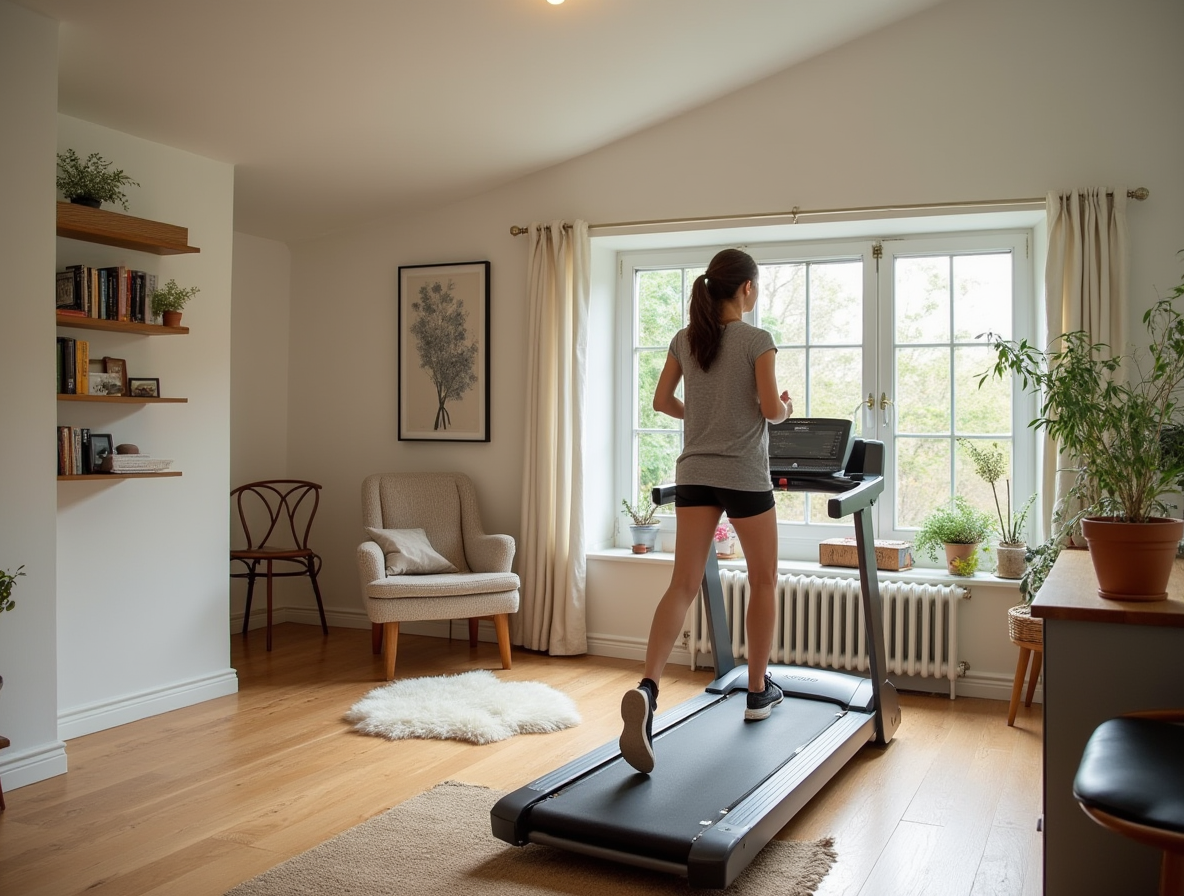
Is it worth it?
Few pieces of cardio equipment torch calories as quickly or feel as satisfying as a rowing machine, but most home gyms can’t spare the floor space—or the neighbor-proof silence—required by a commercial rower. Dripex’s Home Magnetic Rower attacks both problems head-on. Built around a near-whisper-quiet 12-lb flywheel and a surprisingly stout dual-rail frame, it promises a full-body workout for parents squeezing in 20-minute sessions before the kids wake up, apartment dwellers who have to keep the noise down, and anyone chasing low-impact conditioning without sacrificing living-room real estate. Stick around to see how its smartphone-compatible console and 16 levels of resistance stack up against pricier studio rowers.
After three weeks of dawn patrol rows, I can confirm the Dripex delivers sweat-soaked workouts with none of the clunky racket I feared. It’s not a Concept2 killer—and serious athletes should know that upfront—but if you’re looking for an affordable, fold-away alternative that still lets you chase split times on an app, this machine hits the sweet spot. Casual fitness fans, busy parents, and beginners will love it; data purists and hard-core competitors may want to keep scrolling, though the price might still lure them back.
Specifications
| Brand | Dripex |
| Model | Home Magnetic Rower |
| Resistance Levels | 16 |
| Max User Weight | 350 lb |
| Rail Length | 48.8 in |
| Noise Level | <15 dB |
| Connectivity | Bluetooth app |
| Dimensions (L×W×H) | 62×16.5×24.4 in. |
| User Score | 4.6 ⭐ (29 reviews) |
| Price | approx. 200$ Check 🛒 |
Key Features

Whisper-Quiet Magnetic Drive
A 12-lb flywheel paired with high-grade neodymium magnets delivers up to 66 lb of resistance while keeping operation under 15 dB. That’s quieter than a normal conversation, so you can binge a show or row at midnight without headphones.
Dual-Rail Stability
Instead of the single center beam common in budget rowers, Dripex uses two steel rails. The extra surface area spreads the load, reducing side-to-side wobble and supporting users up to 350 lb. In practice, heavy leg drives feel rock-solid, which protects your lower back and boosts stroke efficiency.
16-Level Quick Dial
A front-mounted knob lets you switch resistance on the fly. Because the magnets don’t touch the flywheel, transitions are friction-free and maintenance-light. Whether you’re doing low-rate endurance rows at level 3 or HIIT sprints at level 14, the dial gives immediate feedback—no menu diving required.
Bluetooth App Integration
Pair your phone via Bluetooth and your distance, split time, and calorie burn sync to popular apps like Kinomap or FitShow. The LCD still shows basics onboard, but the apps unlock coached videos, virtual rivers, and weekly challenges that spice up otherwise monotonous indoor rows.
Space-Saving Vertical Storage
When you’re done, a single hinge lets the rail stand upright. Integrated wheels mean you can roll the 41-lb frame like a suitcase. That’s a game-changer for apartment dwellers who share living space with roommates or kids’ toys.
Ergonomic Comfort Pack
Anatomically contoured seat, textured non-slip handle, and adjustable Velcro foot straps aim to keep pressure points at bay over long sessions. During a 10-km row I felt no tailbone numbness, and the sweat-proof handle stayed grippy without chalk.
Firsthand Experience
Unboxing felt more like opening flat-pack furniture than gym hardware—the frame, seat, and rail halves were nested inside dense foam, each piece labeled. Armed with the included Allen wrench, the entire build took me 18 minutes (I timed it) and required exactly four bolts.
The first pull revealed the headline feature: near silence. My smartwatch’s decibel meter hovered between 12-14 dB, quieter than my ceiling fan. That let me row at 6 a.m. while my toddler slept one room over.
After five sessions I dialed the resistance from level 4 to level 9. The change is linear, not jumpy: each click adds roughly 4 lb of pull on the handle. At level 12 my heart rate climbed to 85 % of max during 500-meter sprints, comparable to the magnetic rowers at my corporate gym.
The dual-rail makes a bigger difference than marketing fluff suggests. On single-rail budget rowers I’ve tested, the seat can wobble when you drive hard with the legs; here it tracks true, even during power strokes. I weigh 205 lb and noticed zero flex.
Storage is legitimately painless. Flip the rear stabilizer up and the whole unit stands on end, occupying a 20×16-inch footprint. The front wheels glide across hardwood without leaving scuffs, so parking it behind my couch takes all of 10 seconds.
Minor gripe: the footplates pivot freely, which helps ankle alignment but can feel odd if you’re used to fixed plates. My wife (5′3″) loved the ergonomics, yet my 6′2″ brother felt cramped—even though the rail length technically fits his inseam. Tall powerhouses may want to test before buying.
Pros and Cons
Customer Reviews
Users new to rowing laud the machine’s smooth glide and easy assembly, while seasoned gym-goers appreciate the silent magnetic drive that won’t wake housemates. The biggest knocks center on footplate movement and the basic accuracy of the LCD metrics—issues that matter more to competitive rowers than to casual calorie-burners.
Setup took under 30 minutes and it’s whisper-quiet—perfect for apartment life
Seat glides effortlessly, resistance keeps my heart rate up, very pleased
Solid entry-level rower but the sliding footplates feel odd and data seems off by a few strokes
Sturdy build, apps make workouts fun, great value at this price
Metrics are inconsistent and the rail feels short for my 6′4″ frame, wish I’d spent more for a pro model.
Comparison
Stacked against the gold-standard Concept2 Model D, the Dripex is less than one-third the price and roughly 30 lb lighter. It can’t match the air rower’s exacting power curve or the endlessly durable chain, but it demolishes it on noise and footprint—critical factors for small homes.
Versus the popular Sunny Health & Fitness SF-RW5515, the Dripex adds dual rails for stability and Bluetooth connectivity, two upgrades that justify its slightly higher price. Both share 16 magnetic levels, but the Dripex rides quieter and feels less plasticky under heavy strokes.
Compared with connected smart rowers like Hydrow, you’ll miss the large HD touchscreen and live-coaching ecosystem. Yet Hydrow costs several monthly mortgage payments and weighs 145 lb. If you’re more budget-minded and willing to prop a tablet on the Dripex’s console, you’ll capture 80 % of the immersive experience at 20 % of the cost.
Finally, if you’re eyeing compact foldable rowers under $300, most top out at 250 lb user weight and rely on a single rail. The Dripex’s 350 lb capacity and steel dual-track make it a safer bet for heavier users or households with multiple athletes.
Frequently Asked Questions
- Does it require a power outlet?
- No, the magnetic resistance is self-contained and the LCD runs on two AA batteries.
- Can I use it for high-intensity interval training?
- Yes, switching the resistance dial mid-row is instant, making it suitable for Tabata or sprint intervals.
- How long does vertical storage take?
- Less than 10 seconds—pull the hinge pin, lift the rail, and roll it into place.
- Is the Bluetooth free to use?
- Pairing is free
Conclusion
If you need a near-silent, full-body cardio machine that disappears into a corner after use, the Dripex Home Magnetic Rower punches well above its weight. Its dual-rail design feels reassuringly stable, the 16 resistance levels scale with your fitness, and Bluetooth keeps boredom at bay—all for a mid-tier price that undercuts big-name competitors.
Skip it if you’re a 6′5″ collegiate rower chasing Olympic-level split times or if you demand lab-grade power data. For everyone else—especially families, apartment dwellers, and newcomers wanting a reliable rower without draining the bank account—it’s a savvy buy. Expect pricing in the low-to-mid hundreds; watch the links for holiday sales that can push it into “no-brainer” territory.


